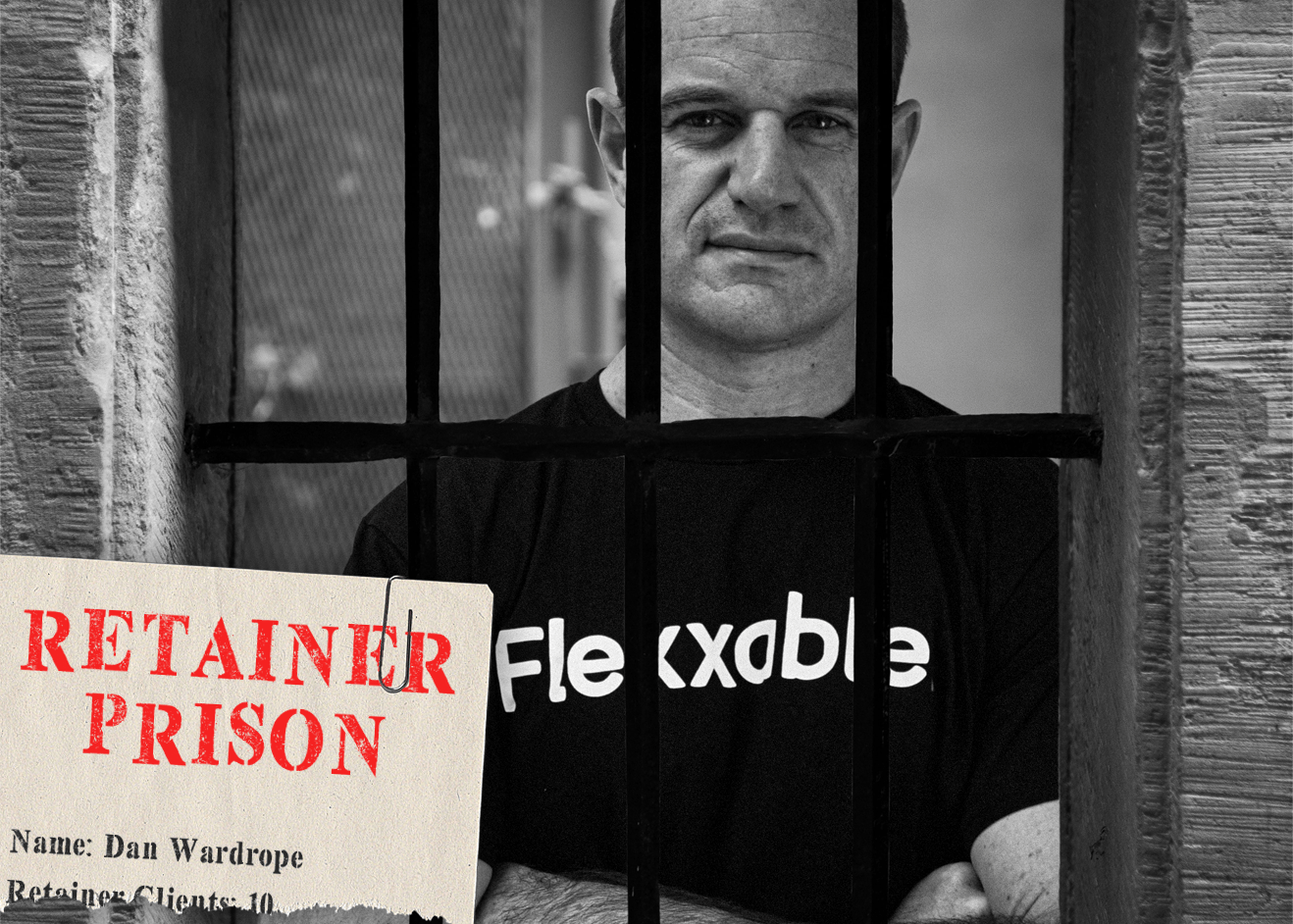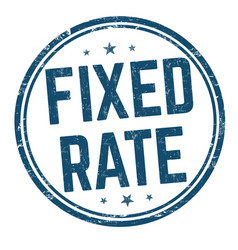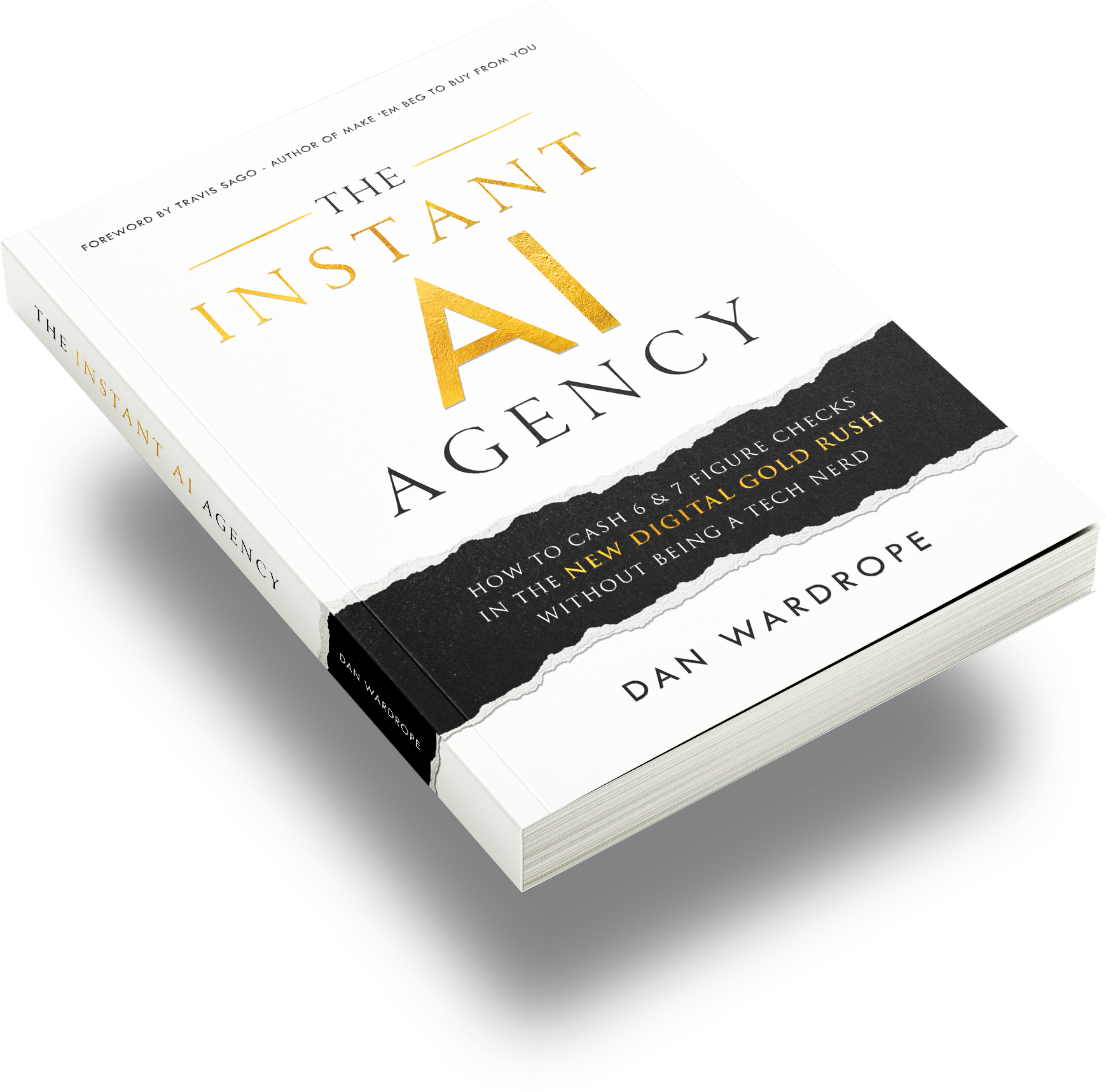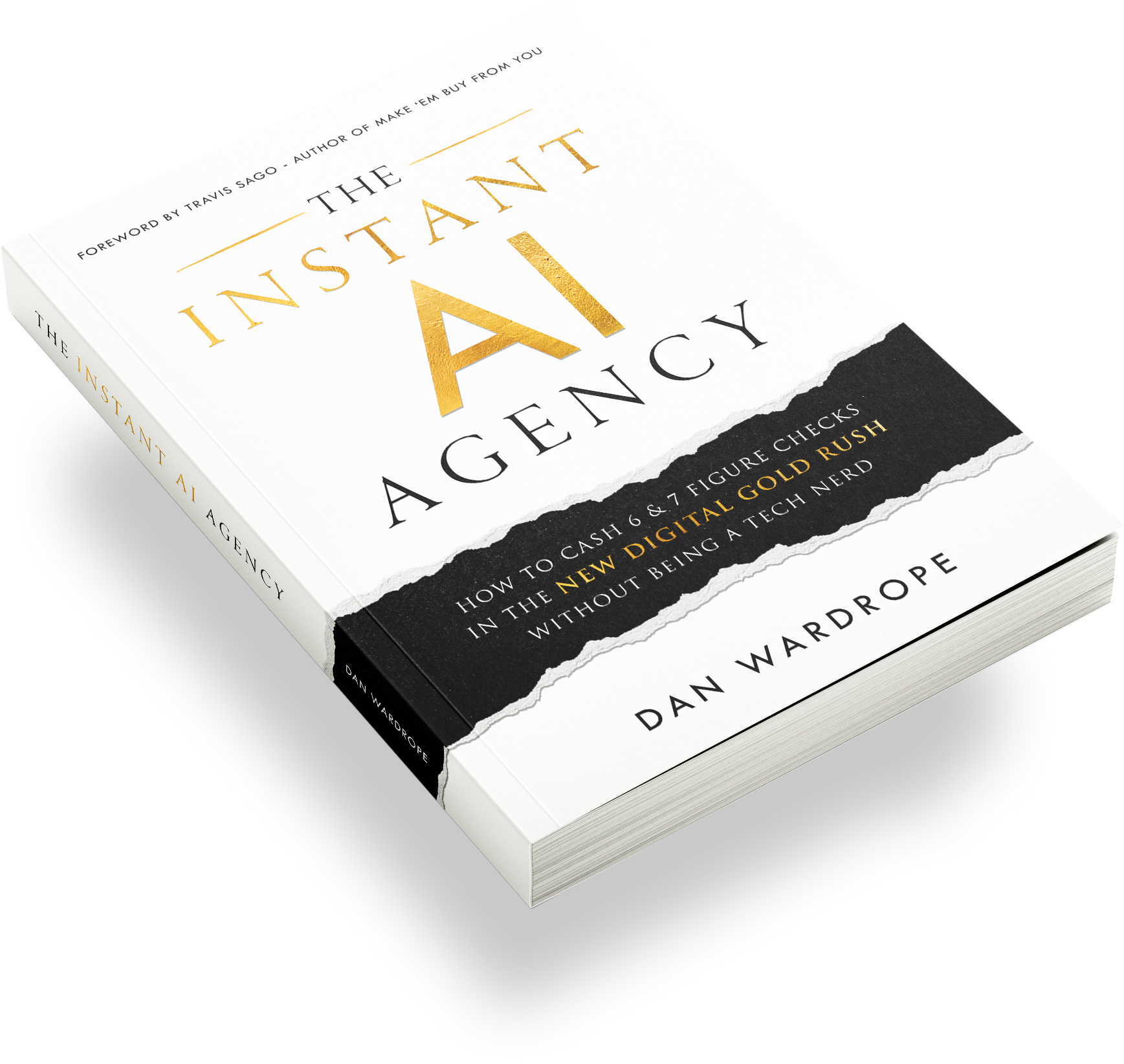All businesses need a steady supply of leads to get by. That’s pretty obvious.
But for the people who generate those leads – the PPC professionals, the agency owners and the freelancers – matters are more complicated.
What’s the best way to market their services?
Do they work on retainer contracts, or do they get paid by results – aka, the Pay Per Lead Model?
There’s so much conflicting advice on the net, it can be hard to know where to start.
Truth is, deciding between retainer contracts and the Pay Per Lead Model isn’t so much a “versus” problem than a reflection of your personal circumstances.
Here’s what you need to know about both retainers and the Pay Per Lead Model.
What Are Retainer Contracts?
Put simply, a “retainer” is a work-for-hire contract.
Most retainer contracts last for three, six or twelve months, with the option to renew at the end of the contract’s term.
This is a standard payment model in the marketing world.
Most agency owners, freelancers and PPC professionals will try to strike a retainer agreement with potential clients.
Retainer contracts work on a fixed fee a month.
Say, for example, you agree that the client will pay you $1000 a month. A six-month contract means you’ll get paid $6000.
There are a host of ways to get paid on a retainer contract. The client may pay the full fee upfront. Or, and this is more common, the client will pay the agency $1000 (for example) at the beginning of each month.
Note that this payment is not intended to go towards ad spend or anything else.
That’s the fee for the agency’s services. It’s up to the client to pay for the ad spend and any other costs.
The role of the agency is to generate leads in exchange for that fee, plus manage any other projects agreed in the contract.
Agreed duties can differ wildly from contract to contract, so no two are exactly the same.
How To Escape "Retainer Prison", Wrestle Back 100% Control Of Your Time AND Give Yourself A Raise By Firing Your 10 Bosses (Clients)

Lemme show you how to fire “pain in the butt” $2,000 a month retainer clients and replace them with $2,000 a DAY Pay Per Lead PARTNERS. Just press the button below quietly (so the warden doesn’t hear) and I’ll slide over my free “Retainer Prison” Escape Plan.
The Advantages Of Retainer Contracts For Agencies/ Freelancers/ PPC Professionals
1. They’re a source of guaranteed income.
As most retainer contracts last three months to a year, you’ll know exactly how much money is coming in over the following months.
This will let you adjust and pay for your overheads (office space, staff, taxes, and so on) accordingly.
2. The Retainer Model is the way most professionals start out.
If you’re new to the game, there’s a tonne of courses, videos and articles on the web that will walk you through retainer contracts.
That’s how to pitch them to clients, set them up, what to agree to, etc. You’ll find no shortage of help if retainers are the model you choose.
3. You’ll be able to build a healthy relationship with the client.
Over the coming months, you’ll become an expert on your client’s brand and business. You’ll know their long-term goals and challenges as well as anyone on their permanent payroll.
If you do a good job, month to month, you’ll end up building a good sense of trust with the client. That can lead to renewed contracts, bonuses, and more.
4. Good relationships with clients can prevent a high churn rate.
Some lead generators find they have a high churn rate with clients. That could be down to problems on either side.
However, a good relationship with a client can bring in an (almost) stable source of income. You won’t need to spend hours a week pitching to new prospects.
5. They’re a great way to build your experience.
When you’re on retainers, chances are you’ll be asked to do more than generate leads. Duties could include SEO, fan page design, AdWords skills, Facebook expertise, CRO skills and more.
If you’re not up to speed with all of these, retainers will force you to get better. It could even be the case that you and the client learn (and grow) together.
6. You won’t be taking any huge risks.
As the client pays for the ad spend and anything else outside of your fee, there isn’t a huge risk for you.
If you have a month of poor-quality leads, you’ll still get paid your monthly fee. This is a good safety-net if you’re new to the niche, or you’re just getting used to the brand goals.
The Advantages Of Retainer Contracts For Clients
1. Clients are spending a fixed amount every month.
That won’t change unless you ask for extra duties outside the contract, which you will have to pay for. Allocating a fixed sum every month can help you budget any projects accordingly.
2. Depending on the terms of your contract, you’ll get more than leads.
Some businesses have it all figured out when it comes to sales, follow-up, and marketing, while others are in the learning stages.
Having a seasoned lead generation agency / freelancer / professional on a contract means you’ll get more bang for your buck.
3. You’ll be in control of the ads/funnels/changes to the website.
As you’re paying for a certain service, you’ll still be in control of what goes on “behind the scenes”. If you don’t like an idea, you can prevent it.
If you want certain changes made to a landing page or ad, you can ask for it to be implemented. You can supervise the whole process if you wish.
4. Working with one agency/freelancer is easier than working with many.
If you’re working with a lot of agencies or freelancers on short-term commissions, communication can stretch pretty thin.
Lack of communication widens the margin for error. With a contracted agency, you can call on them whenever you like and get problems fixed quickly.
5. Working closely with one agency can improve your results.
If an agency is familiar with your brand, offer and audience, they’ll be much easier to work with than someone who has to be prepped.
Long-term relationships mean better understanding, which leads to ads and content more closely aligned with your goals.

The Disadvantages Of Retainer Contracts For Agencies / Freelancers / PPC Professionals
1. There’s no way of increasing your monthly fee.
Once you’ve agreed to a specific sum every month, it’s extremely difficult to get a client to pay you more.
Had a good run with leads this month?
Don’t expect a bonus. Some clients will even offer you less money than your usual rate, in exchange for the promise of steady pay.
2. A client’s “extras” may run you ragged.
From SEO, to fan page design, to everything else, you may find yourself spending way too much time on one client. If a client pays you $1000 a month for 10 hours work per week, that comes to roughly $25 an hour.
However, if you’re spending hours and hours building landing pages, designing websites, etc., that $25 per hour can diminish, fast.
If one client is particularly demanding, you may find yourself neglecting other clients against your will. After all, there are only so many hours in the week.
Of course, ignoring other clients hardly sets you or your agency up for success. Which brings me to…
3. You’ll be a “Jack of all trades” rather than an expert in your field.
It’s definitely an advantage to have a range of skills under your belt. But one person can only be stretched so far.
I see agencies with three or four employees boast about being a “full service” agency.
They’re doing SEO, website design, Google AdWords, Facebook ads, and all the rest. Thing is, they’re so overloaded with information and various tasks, they’ll never have the time to hone one key skill.
Being a master in one field can be a lot more profitable than average in many.
4. Retainer contracts are hard to sell.
It takes a long time to get a client to trust you, and even longer to build a good reputation. Sure, a client will jump at the chance of a retainer contract – if they know and trust you.
But if you’re cold-calling prospects and asking for retainers, be prepared to hear a lot of “no”s.
First off, the client doesn’t know if you’re any good – and they only have your word for it. What if they extend a contract and you’re nothing but a disappointment?
Secondly, they’ll have to be prepared to spend a lot of money upfront. That’s your monthly fee, the ad spend, and the costs of any changes you need to make.
They could be looking at a five-figure bill – again, a big risk if they don’t know if you’re any good or not.
To any wary client, it may just be better to hire a freelancer short-term. If that doesn’t work out, they won’t use them again. If it does, they could then offer them a retainer contract.
5. You may become dependent on one or two clients.
When you’ve signed a retainer contract, you essentially get tied to a short leash in the hand of your client. You’ll essentially be at your client’s beck and call.
Unless you’ve got a big agency, this can make getting other clients pretty difficult.
As a result, too many small agencies tend to become a slave to the 80/20 principle. This means that 80% of their income comes from one or two “big” clients, with the other 20% coming from smaller clients who don’t need as much attention.
They bend over backwards for these “big” clients, but they’re left in a terrible position if the client decides to leave.
With 80% of their income gone, small agencies will be scrapping around for more clients to bridge the gap.
But, as I mentioned, retainers are a hard sell, and making up the difference can take longer than anticipated.
6. Clients on retainers tend to be small-time or local.
While there’s nothing wrong generating leads for plastic surgeons, dentists or gyms, there’s no real room to scale.
Local, or “small business” clients tend to pay far less for advertising than a national B2C client with a big offer.
They have fewer systems in place to deal with large volumes of leads, or to follow-up their leads quickly enough.
With a low contact rate, due to the leads going “cold”, small or local clients have been known to blame agencies for poor quality leads.
Unless you’re prepared to put in a lot of work for a small amount of money, retainer contracts can mean a lot of stress for a poor rate of pay.
The Disadvantages Of Retainer Contracts For Clients
1. New agencies can be high-risk.
Retainer contracts mean spending a certain amount upfront. The sum can differ wildly, depending on factors such as:
- What duties you’ve agreed to in the contract
- How long the agency has been “in the game” – seasoned agencies will expect more money
- Your ad spend
- How much of your funnel needs fixing up – i.e. landing pages, thank you pages, etc.
Even a smaller, newer agency may require a five-figure sum upfront. Of course, you’ll need to take risks to establish relationships with marketing agencies. However, if the agency disappoints you, it comes at a high cost.
2. Work-flow will rise and fall from month to month.
The first month with an agency may be high-intensity. They could be fixing your funnels, making changes to your website, and providing sales coaching.
That’s great! You’re getting your money’s worth!
Other months, you’ll be scraping around for the agency to do something other than the bare minimum. You could potentially pay a lot of money that month for not much work.
3. Agencies will have other clients.
It’s during those quiet months that agencies will look for other clients.
If they find a client willing to spend more, you could soon find yourself dropping down the priority list.
Some agencies have over 40 clients, with one specialist handling up to 17 client accounts at once.
4. Fixed prices mean no incentive for the agency to work harder.
Once they’re in a retainer contract, an agency is unlikely to pull out all the stops for you, as they’re working on a flat-fee.
Agencies should have a realistic understanding of how much time your company needs, and be ready to apply feedback to use their and your time effectively.
However, cushioned by the retainer fee, they’ll be happy to coast along. Say, for example, the agency is generating your company 100 leads a month.
You’re reasonably happy with this, but think 200 or 300 would be better. How would you achieve this? By giving the marketing agency more money.

What Is The Pay Per Lead Model?
The Pay Per Lead Model is just that: the agency/freelancer/professional gets paid by results.
For agencies, the Pay Per Lead Model (PPL) works on the idea that clients want high-quality leads and nothing else.
There are no contracted months or any lengthy paperwork. Pay Per Lead agencies can work with clients for as little as a week (though obviously hope for much longer).
So, the model is pretty simple. You (the agency) generate leads for X amount per lead, then sell them to the client for Y per lead.
Y – X = N. The N is your profit margin.
Let’s use a quick example: say an agency is working with a car finance client. The car finance company ask for 100 leads in a week.
On the Pay Per Lead Model, the agency usually pays for the ad spend. They know, from experience, that they can generate leads for about $15 in the car finance niche.
The client agrees to pay $30 per lead. The agency pays $1500 on ad spend ($15 cost per lead x 100, the number of leads requested by the client).
In return, the client pays them $3000 ($30 per lead x 100, the volume of leads required).
$3000 – $1500 = $1500. So, the agency is making a $1500 profit or $15 per lead.
The Pay Per Lead Model works with any platform you choose to advertise from. That could be:
- Snapchat
- YouTube
- Gemini ads
- Google (search).
If you’ve got a hot SEO game, and rank high on Google, you can generate leads organically and send them to clients.
You can produce organic leads via a lead generation website.
However, most clients want leads at a large volume and over a specific period (i.e. 100 leads in a week).
Organic leads take time, and there’s no consistency in volume week by week. That’s why a lot of agencies on the Pay Per Lead Model generate leads using paid ads.
Is The Pay Per Lead Model Really Just Leads?
Yes and no.
On the Pay Per Lead Model, the client is just paying you for the leads you generate.
This means you’re completely in control. You run all ads from your personal Ads Manager, and the client has no access to it.
However, to get the highest-quality leads, you’ll need to create all the sales funnels for your clients. That means you’re responsible for:
- All ads (creation and management)
- Advertorials
- Quizzes and surveys
- Landing pages
- Thank you pages
- Lead validation systems
- Lead segmentation strategies (if necessary)
It sounds like a lot of work, but it gets easier as you get more experience.
This is why, on the Pay Per Lead Model, I recommend working in one speciality niche – at first at least. Choose a niche with a lot of clients to work with.
I find these niches to be in the finance sector, although what you choose to specialise in is up to you.
Niches I’ve worked in, with plenty of demand, include:
- Debt consolidation
- Life insurance
- Income protection
- Invoice financing
If you choose your niche wisely, you’ll soon know what works and what doesn’t. For example, you land a client in the debt consolidation niche.
After some trial and error, you find a funnel that works.
For your next client in the debt consolidation niche, you can use a very similar funnel.
Just adjust the branding, the tone, and so on to suit the other client. You know it’ll work, as you’ve already tried and tested it.
There are also other, small, ways to make your life easier. Building landing pages, advertorials, etc., doesn’t mean you need to master coding. Look for a good drag-and-drop page builder, like Unbounce.
Once you’ve got used to the software, building pages will take hours, rather than months. It’s well worth the monthly fee.
And, as you’re in control of the funnel, integrating the pages into the client’s website won’t take an age. When I worked with retainer contracts, any changes I wanted to make to the funnel had to go through the IT department.
Now, I just take the pages I’ve made and attach them to my client’s domain. Easy!
Do Clients Always Pay For Leads Upfront On The Pay Per Lead Model?
There are actually five different ways of selling leads on the Pay Per Lead Model, and they deserve a post to themselves.
However, I’ll give a quick example of each “model within the model”, without delving too deeply into the pros and cons of each.
1. Sell Leads Exclusively To One Client, With An Upfront Payment
This is the most common Pay Per Lead Model method, and the one I loosely described in “What Is The Pay Per Lead Model?”.
If you haven’t got much experience in your niche, try testing it out on “smaller” clients first, like dentists or gyms, just to get the practice in.
In this model, you pay for the ad spend. You agree with the client how many leads they want that week – e.g. 200.
You then work out the cost per lead, say $10. The client agrees to pay $25 per lead, and they will pay you upfront. 200 x $25 = $5000.
I usually ask for the money to be paid into my account on Friday, and then I’ll switch on the ads the following Monday.
No money? No ads.
All the leads you generate will be for that client only. You can’t sell them onto anyone else, and you’ll have no rights to them once they’re in the CRM system.
If the leads cost $10 each to produce, and the client wants 200 leads, you should pay $2000 on ad spend. If all goes to plan, you’ll make $3000 profit overall.
$5000 (client payment) – $2000 (ad spend) = $3000 (profit).
Note: The client pays for the full 200 leads, even if a percentage of those leads don’t pick up the phone or respond to the client’s sales team.
If you follow this model, you must explain that a 100% contact rate is almost impossible.
2. Sell The Same Lead To Multiple Clients
You’ve generated a large volume of leads in a niche, probably on a lead generation website.
You land five clients, all working in the same niche.
You then set a price per lead, say $30, then sell that lead to all those clients.
After that, the lead is out of your hands. It’s up to the clients to try and close it. Essentially, whichever client has the best follow up system will close the lead and “win” it first.
The other four clients don’t technically “lose out”. It works on the same basis leads sold exclusively to them – the client can either close the lead or they can’t.
They still need to pay for leads they can’t close.
3. Sell Leads Exclusively For X Number Of Days, Then Open Them Up To Anyone
This is a hybrid between models one and two. The difference is, when you sell these leads exclusively to a client, you still own the lead.
If the client can’t close the lead over X number of days, you can open up the lead to other buyers.
As the lead is now cold, you’ll be selling it for much less than the price you sold it for to the first client.
The profits from this deal will come on top of the ones you made with the exclusive transaction.
4. Sell Leads Using The Back-End Model
This is the ultimate “paid on performance” model.
When you’re in a back-end deal with a client, you pay for the ad spend, and you agree how much that will be.
You’re then in charge of setting up the funnels, creating the ads, etc. You deliver as many leads as you can for that ad spend.
The client will then try and contact as many of those leads as possible. If any of those leads convert, they will pay you a “commission fee” per conversion.
This commission fee will usually be 10%-25% of how much the conversion is worth to the client. Say the product/service the client markets costs $6000.
10% of that is $600.
If the client manages to convert 12 out of 100 leads, you could earn $7200. From that, you’ll need to minus your ad spend – then you’ve got your profit margin.
5. Sell Leads Using The Hybrid Model
So-called because it’s a hybrid of the front and back-end models.
With this model, you ask the client to pick up the advertising spend. You’re still responsible for building the funnels and running the ads, but you don’t need to take a monetary risk.
You then generate as many leads as you can with the agreed ad spend. When the client receives the leads, their sales team will try and convert them.
For every lead they convert, you’ll get paid an agreed fee.
Clients love this deal because they know they’re getting plenty of bang for their buck.
As you can see, the hybrid model is pretty similar to a retainer contract – without the three-month to a year commitment.
The Advantages Of The Pay Per Lead Model For Agencies/ Freelancers/ PPC Professionals
1. The Pay Per Lead Model Is A Much Easier Sell
When clients hear they’ll only be paying for leads delivered, they’ll chomp at the bit to take you up on your offer.
Most clients dread retainer contracts. They don’t want to make a long commitment to an agency/ freelancer/ professional they barely know or trust.
If the agency turns out to be a disappointment, the client will have wasted a lot of money.
Retainers also need to take into account the ad spend and extras, like SEO and sales training. Those add significantly to the monthly costs. With the Pay Per Lead Model, on the other hand, clients will only need to pay for leads by volume or lead by conversion.
As far as they’re concerned, all risk is in the hands of the agency owner.
2. Clients On The Pay Per Lead Model Tend To Have Deeper Pockets
As I said earlier, clients that want retainer contracts tend to be “small-time” and want a lot of attention.
Clients that agree to a Pay Per Lead deal can afford to pay you a good profit margin per lead. This may be because they sell a “high-ticket” product or service worth thousands of pounds.
A lead that costs $30 is nothing if that lead converts to a $3000 customer.
And, clients with deeper pockets tend to have better sales teams, follow-up systems, websites, branding, and so on.
This means a lead generation agency on the Pay Per Lead Model can spend less time hand-holding, and more time doing what they do best.
3. On The Pay Per Lead Model, You’re Your Own Boss
On retainer contracts, you’re pretty much at a client’s beck and call. That’s pretty annoying, as you probably left your 9-5 job to become your own boss.
If they’re smart, clients will look at you as an investment, rather than an employee. See, on a retainer, you’ll be paid a flat fee, regardless if the leads are any good or not.
On the Pay Per Lead Model, repeat orders depend on high-quality leads. If you’re good at what you do, clients will fall over themselves to hire you again.
You’ll be viewed as the person driving the client’s business growth. As the scales are balanced (the client needs you as much, if not more than you need them), there’ll be no employer/employee dynamics.
Most clients will treat you, over time, as a partner.
You’ll also own all your funnels, websites, and so on. You won’t spend hours (or days!) waiting for permission from the client, or hanging on for the IT department to change parts of the website.
You’ll be less dependent on the client if anything falls through.
4. The Pay Per Lead Model is a Super-Fast Way To Scale Your Business
Once you’ve had some practice in your chosen niche, and you’ve got funnel templates that work, you can bring the cost per lead right down.
Say, for example, you were generating leads for a client in the debt consolidation niche. You start off by generating leads for $20 and selling them for $30. That’s $10 profit per lead.
As you gain more experience in that niche, you find that you can generate leads for $15. The client is still paying $30 per lead, so your profits have gone up to $15 per lead.
Scaling like this wouldn’t be possible with a retainer contract. You could be generating leads for $2, and you’d still get the same fixed fee as agreed with the client.
On the Pay Per Lead Model, you work out how much to charge a client per lead. If the CPL goes down during the generation process, the client will still pay the same amount as agreed. If you have multiple clients within the same niche, you can get a really low CPL.
That means you’ll take a fat profit from each client, scaling your business accordingly.
5. On The Pay Per Lead Model, You Can Segment Your Leads And Sell Them To Multiple Clients
Say you’re generating leads for a client in the car sales niche. Client A wants leads that are ready to take a specific action – they want to sell their cars immediately. Client A is prepared to pay $30 for leads that fit this criterion.
Out of the 100 leads you generate, your funnel (i.e. a quiz data) suggests that only 50 are a match. If you send all 100 leads to Client A, Client A would be within his rights to complain about the lead quality.
Client B, on the other hand, is willing to take leads that will enter a nurture sequence. He offers you $10 per lead and commission for any leads that convert.
This way, no leads are “wasted leads”, and you’ll be breaking even or making a profit on all of them. Lead segmentation can go on for as many clients as you choose to take on in that niche.
The Advantages Of The Pay Per Lead Model For Clients
1. The Pay Per Lead Model means there’s no long-term commitment
With the Pay Per Lead Model, there’s no time-consuming paperwork or 3 to 12-month commitment.
If you’re reaping the benefit from the leads, you can renew the agreement with the agency the following week. However, if the leads aren’t up to scratch, you don’t need to work with the agency again.
This dramatically reduces any risk when you look for outside parties to generate your leads.
2. You can be specific about the leads you want
As agency owners on the Pay Per Lead Model get paid on results, they’re going to be extra-diligent about lead quality.
If you want a specific type of lead (i.e. only people who are ready to take action immediately), you can give that information to the agency. It’s then up to the agency to ensure that the leads match your requirements.
Superior lead generation like this is incredibly valuable. It also means you’ll only be paying for leads with the high probability of conversions.
3. Agencies on the Pay Per Lead Model will go out of their way to provide value
One of the biggest arguments in the “Pay Per Lead vs Retainer” debate is that agencies on the Pay Per Lead Model won’t help with anything other than generating leads.
That’s not true. If you’ve got a low contact rate with a batch of leads, that’s a problem for you, which is a problem for the agency.
Say, for example, that your company isn’t well-versed autoresponders, nurture sequences and follow-up systems.
A good lead generation agency will help you identify the problem, make suggestions, then execute any changes you agree to. You’re paying for a quality product, so it’s up to the agency to ensure quality is achieved.
4. Agencies on the Pay Per Lead Model build your funnels for free
Again, there are no “extras” to pay for. You’ll just be paying for the leads.
This means all your ads, advertorials, quizzes, landing and thank-you pages are built for free. A good agency knows what works, so you won’t have the stress or the time-commitment of building funnels from scratch.
Pay Per Lead agencies will run everything by you before the funnel goes live, and they’ll make sure all information is accurate.
When the funnel is live, you won’t need to “supervise” what’s going on, letting you work on the business rather than in the business.
5. The Pay Per Lead Model means you’re guaranteed X amount of leads
Whether you’re looking for quality, volume or both, you agree with the agency how many leads you want per week.
It’s up to the agency to hit that target, with all of your specifications. This contrasts with the Retainer Model, where the quality and quantity of leads may differ drastically from month-to-month.
The Pay Per Lead Model works on consistency, giving you peace of mind.

Sick of being a “Master Of None” and a slave to your ‘whale’ clients?
I would fire a pain-in-the-butt $2,000 a month retainer client for Pay Per Lead PARTNERS that make $3,000 profit a DAY every day of the week.
In fact, I fired them ALL!
Would you?
Then get our “Retainer Prison” escape plan.
It’s free.








